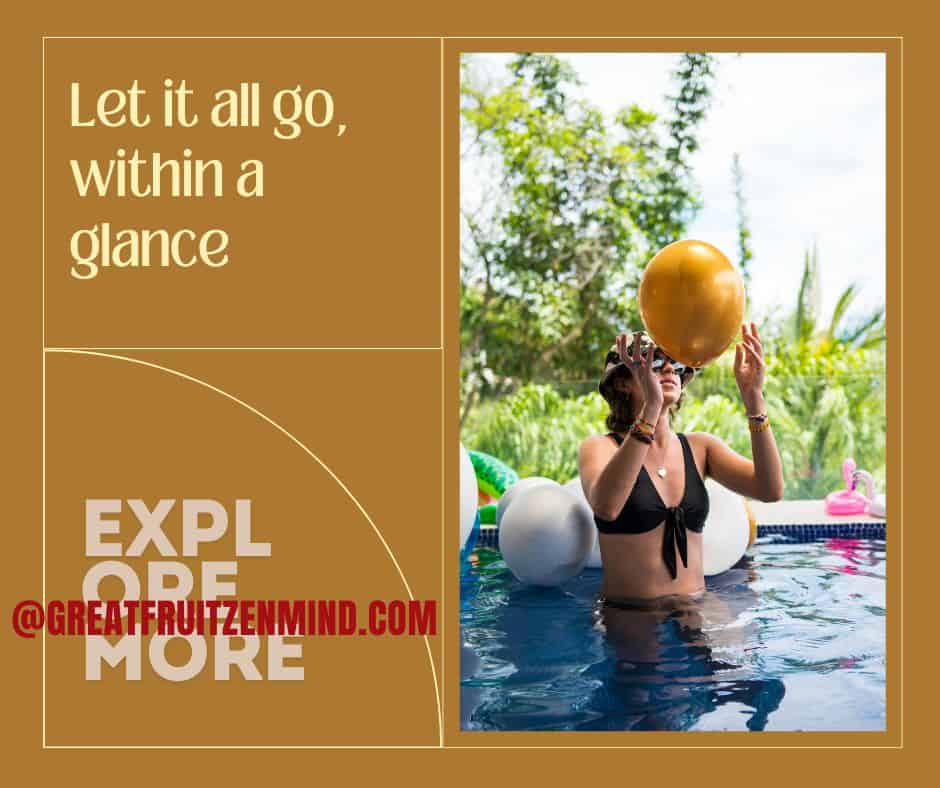Read time 4 minutes. A Knowing Glance Within is a stand alone article in our Everyday Zen series.
Let’s pick up where we left off with Everyday Zen. Today I want to focus on the act of a knowing glance within—a glimpse of allowing. Why another lesson on this? Because if you’ve been following these practices, the limitations of words should already be clear. We are trying to describe personal experiences that resist language, yet here I am, trying anyway.
Ultimately, each of us must discover our own path. Every school of teaching offers its own methods because what misses one student may open another. With that in mind, let’s take another bite at the apple.The action of inaction
I first spoke of the knowing glance in The Subtle Art of Not-Doing. That lesson explored a paradox: choosing not to choose still contains choice. Inaction is still an action. Not-doing still carries the trace of doing.
The goal here is refinement. Over time, the act of glancing inward becomes less obvious, less effortful. The teachings and practice compress, becoming something lighter, quicker, more seamless.
Knowledge and practice streamlined
Consider how this works. Deep knowledge of the teachings and committed practice both position us to be open. They don’t cause awakening, but they set the stage for it. A knowing glance within compresses these two forces. It is a glance because it is brief, bypassing the traps of overthinking. It is knowing because it carries the weight of understanding.
Knowledge and practice optimized in a single, quiet motion.
Step one: Belief and trust
Say it’s a leisurely day off. Suddenly, the thought of Monday intrudes—a busy, important Monday. Instinctively, I begin to review the teachings: presence, acceptance, the futility of worry. I remind myself that I am more than the egoic self that dreads the future. There is comfort in this reasoning, even wisdom.
But the thought of Monday will return. And running the teachings again and again soon becomes tiresome. Practice itself begins to feel like more labor than life’s troubles. Many abandon it at this point.
Step two: A knowing glance
So what if, instead of rehearsing all those thoughts, I simply give Monday a knowing glance? Okay, Monday. I see you.
This small act can be more complete than the reasoning that came before it. The glance carries the depth of understanding without dragging thought along. It is knowledge and practice distilled into presence.
Step three: Streamlining further
In time, even the inner dialogue—I see you, Monday—can be dropped. The glance itself is enough.
We learn to recognize the signals: the thought arising, the emotion swelling, the moment before the storm. And we meet it immediately with the glance. A swift acknowledgment that halts the vicious circles before they tighten.
The quicker the glance, the better. Quick because it doesn’t disrupt the flow of life. Quick because the longer we dwell, the more likely thought takes root. Quick because it refines the practice of observing thoughts into something subtler and more sustainable.
Toward universal letting go
At its most advanced stage, the glance becomes universal. Not aimed at one problem, then another—but a single, de-contracting release of everything at once. It is trust compressed into a gesture, a surrender so practiced it becomes instinct.
This practice transforms the inner world. Moments of stress, doubt, or anxiety give way to sudden peace—not because life has changed, but because we have turned to practice and let go.
Over time, we also discover the corners we resist letting go of. At first, just recognizing these is enough. Later, we face the harder task of releasing them. It will not always be easy, but then again, neither have our old methods. With persistence and patience, it becomes lighter. It becomes natural.
Explore more:
Our attention is attracted to the activity of the outside world. Yet the way that we feel, as often as not, is conditioned by our emotional state or inside world. Psychology Today suggests that the brain might actually function differently depending upon whether our attention is focused inwardly or outwardly.
In short, when we learn to look inwardly, we might also be training ourselves to access and utilize different parts of the brain. (Aka: mind training.) It is a fascinating read which also supports many of the points that we find in Zen. “…the neural networks of interoceptive attention may provide an inbuilt system separate from the thinking mind to help ourselves find calm. We can’t control our mind with our mind… we may be able to escape our racing thoughts.” There are also hints of presence practice, of being fully engaged in our current activities.
Pick a lane (or meander):
- 🔁 Follow Along:
- 🍉 About Us: Watermelon Soup For The Soul →
- ⚓️ Go Deeper: The Undercurrent Signup →
- 🛍️ Shop Around: Visit the GZM Store →
- 🦋 Do Nothing, See What Happens: Mini Practice→
- 🌀 Linger: Go to Homepage →
🌀 From the GZM Archives – Polished, Preserved, Still Relevant.


Leave a Reply